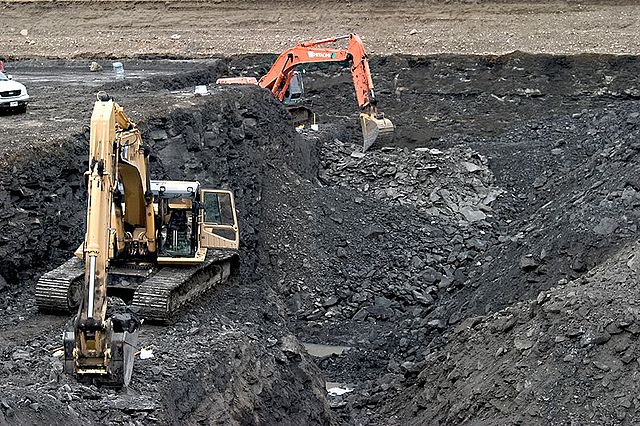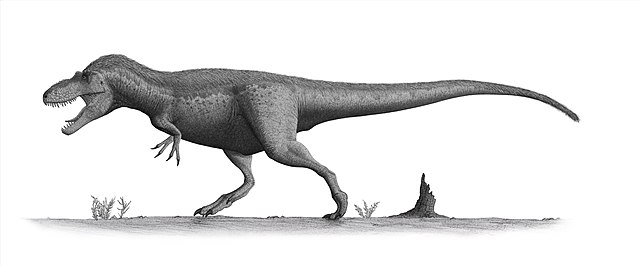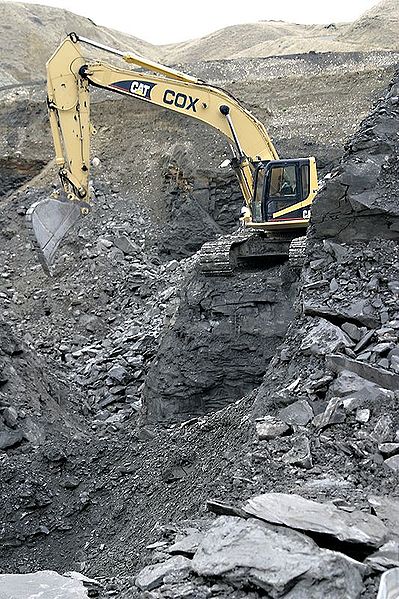The Bearpaw Formation, also called the Bearpaw Shale, is a geologic formation of Late Cretaceous (Campanian) age. It outcrops in the U.S. state of Montana, as well as the Canadian provinces of Alberta and Saskatchewan, and was named for the Bear Paw Mountains in Montana. It includes a wide range of marine fossils, as well as the remains of a few dinosaurs. It is known for its fossil ammonites, some of which are mined in Alberta to produce the organic gemstone ammolite.
Contact (red arrow) between the underlying marine shales of the Bearpaw Formation and the coastal Horseshoe Canyon Formation.
Bearpaw shale being excavated to recover ammonites for ammolite production.
A specimen of Placenticeras ammolite from the Bearpaw Formation.
Daspletosaurus
Ammolite is an opal-like organic gemstone found primarily along the eastern slopes of the Rocky Mountains of North America. It is made of the fossilized shells of ammonites, which in turn are composed primarily of aragonite, the same mineral contained in nacre, with a microstructure inherited from the shell. It is one of few biogenic gemstones; others include amber and pearl.
In 1981, ammolite was given official gemstone status by the World Jewellery Confederation (CIBJO), the same year commercial mining of ammolite began. It was designated the official gemstone of the City of Lethbridge, Alberta in 2007.
Unprocessed sample of ammolite; a "dragon skin" pattern is apparent
An iridescent ammonite from Madagascar
Korite's mechanized mining operations are fairly basic, involving the excavation of shallow pits with backhoes.
Another view of Korite's open-pit mining operations in Alberta, Canada.







